This is an informational website about cymbals made in Italy during the middle part of the Twentieth Century. I am collecting information, researching, the significance of the different symbols. To the extent that I don’t find them well described in English, I hope to generate language to make them significant. Work remains in developing the calculus of how to tell the Italian cymbals apart.
UFIP (1931-present)
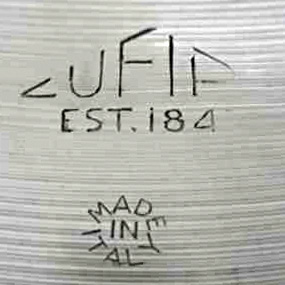 |
Vintage Italian cymbals were produced by a collective: the “Union of Italian Cymbal Manufacturers” (Italian: Unione Fabbricanti Italiani Piatti). UFIP was formed by 5 Italian cymbal makers in 1931, in Pistoia, Tuscany (Italy). “Est. 1847” refers to the time when Luigi Tronci’s great-grandfather started making church bells. This stamp is from a cymbal purchased in 1958. Most old UFIP cymbals were sold through secondary distributors (see below). Some include round “Made in Italy” stamps: engraved stamp | round ink-stamp | square ink-stamp. These most always be traced back, one way or another, to Tuscany. |
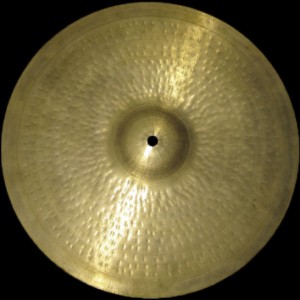 |
15″ UFIP hi-hat (800 grams). Very distinctive hammering. The old UFIP cymbals are rotocast, hand-hammered, B20 cymbals. |
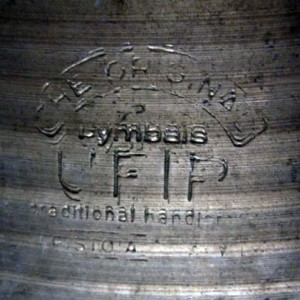 |
Cymbals UFIP traditional handicrafts PISTOIA Below, you’ll find several “stencil brands” that UFIP produced for drum manufacturers, several of which try to appear Turkish in origin. |
Stanople (1930s – 1960s)
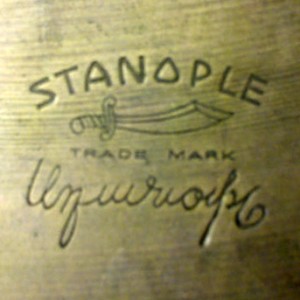 |
Stanoples were not made in Constantinople, Turkey. They were made in Italy, and they were stamped “Made in Italy“. They were distributed by the Leedy Drum Company. Paiste briefly also produced “Stanople” cymbals from 1957-1960s (see Paiste Stanople stamps: Switzerland | Germany) but these are not connected. |
Zenjian (1940s – 1960s)
Zanchi F&F (1947-1970s)
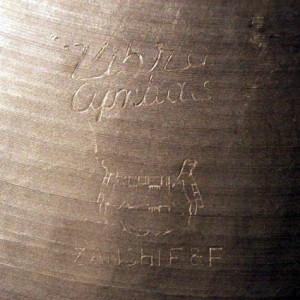 |
The Zanchi brothers were 2 of the original 5 cymbal manufacturers who started UFIP in 1931. In 1947 Fiorello Zanchi started his own operation in Pistoia. The “F & F” stands for Fiorello & Figli (thus it means: “Fiorello Zanchi and Sons”). One of the first line of cymbals produced by Zanchi was called “Vibra”. |
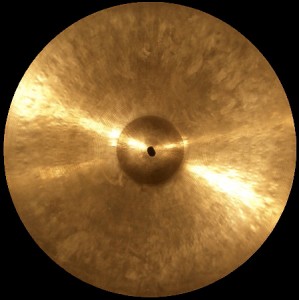 |
20″ Zanchi ride. In the mid-1970s the company changed the spelling of their brand to “Zanki” (see below). |
Pasha (1950s – 1960s)
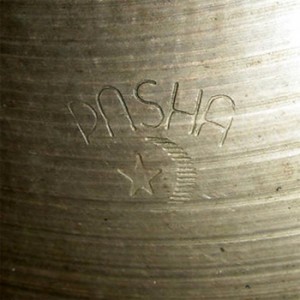 |
A Pasha cymbal stamp, reportedly from the 1960s, produced by UFIP. The Cymbal Book says that these were distributed by Trophy Music in Cleveland, Ohio. |
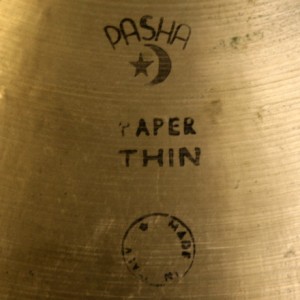 |
I was told this stamp is from the 1960s, which would follow the trend of many other cymbal lines moving toward ink stamping later rather than sooner. * Today, Pasha cymbals are back on the market! Their website claims they come from a “Turkish” factory! Though this Italian drummers’ website claims Pasha currently has a factory in Abruzzo (200 km southeast of Tuscany, but still in Italy). |
Kashian (1960s-1980s)
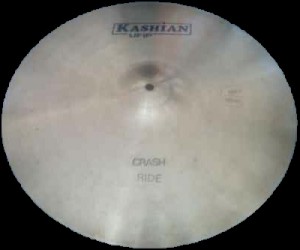 |
Kashian cymbals were made by UFIP for Slingerland between the 1960s and the 1980s, from B20 bronze. There were also several “economy” cymbals made by machines and from inexpensive metals. |
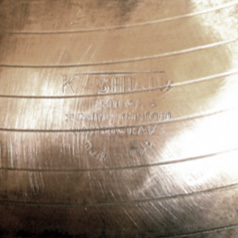 |
Cymbals Genuine Eastern HANDCRAFT Made in Italy This stamp is from the Kashian Pro line: B12 (cheap bronze), machined, non-cast. There were also B8s. Kashian 2000 (later renamed Kashian Standard) were made out of brass (that is, garbage). |
Zanki (1970s-1992)
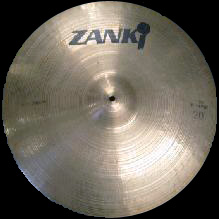 |
The Italian wikipedia page says that Zanchi changed the spelling to Zanki in the 1970s because he was tired of non-Italians misprouncing the name. It also explains that the cymbals were cast traditionally, though for a brief period the company tried rotocasting. These cymbals were reportedly marked “Zanki Rotocasting”. |
Tosco (1974 – 1985)
Spizzichino (1980-2011)
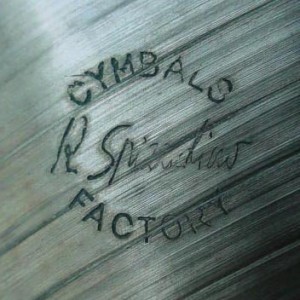 |
Roberto Spizzichino made handmade cymbals in Tuscany from 1980 to 2011. He formally left UFIP in 1986. His early cymbals were ink-stamped “Spizz”. He used B20 bronze, both Chinese and Turkish Alloy cymbals are out there, in several distinct cymbal styles. Mainly jazz rides. Roberto Spizzichino died on November 22, 2011. He was 67 years old. |
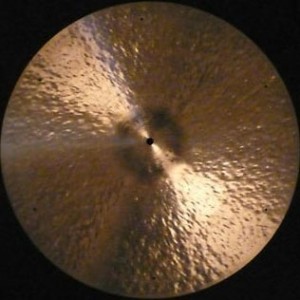 |
Spizzichino cymbals are in a class of their own. It is worth your while to web research this guy and the information about cymbal production that he left behind. |
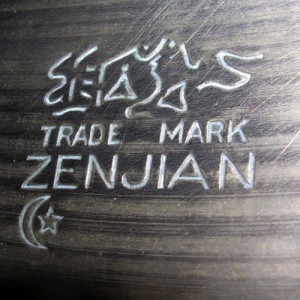

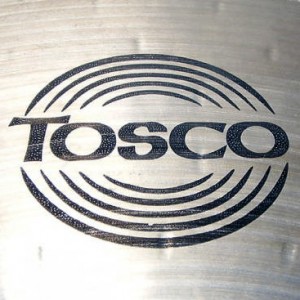
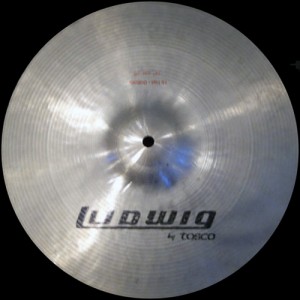
Pretty good info here. FYI, I heard that Tosco is owned by Sabian now and resurfaces in stores like GC here and there. I bought a “cheap” Tosco cymbal for my son’s kit that is apparently a rebranded Sabian AAX.
Thanks for your research on this. You enabled me to identify the identity of a UFIP cymbal on ebay and score a sweet deal!!! Can you narrow the age/decade of a cymbal with the round ink stamp (http://www.robscott.net/cymbals/wp-content/uploads/2010/11/italy3.jpg)?
Very happy to have found this site. Even happier to have finally found a reference to my cymbal.
In the mid 1970s, I bought an “unknown” cymbal at a flea market for a measly $20… suspended on my fingertip and played in a noisy outdoor setting with a ballpoint pen, I thought it sounded very nice. Later, played on my set with the band, I was blown away by what I had picked up for next to nothing at the swap meet.
Over the years, in admittedly un-scientific listening tests with band mates, this cymbal has consistently beaten other major brands as the preferred cymbal. Among others, it has beaten a 24″ A Zildjian ride, a 20″ A Zildjian ride, a 21″ K Zildjian ride, and a 20″ Paiste ride.
For the record, it has the square “MADE IN ITALY” stamp on the back side of the cymbal, along with two stamps under the bell of the cymbal…. one says Ajax in a script and the other is a squiggle that looks a bit like a cursive m with a line over it.
I’ve loved this cymbal for more than 30 years and am thrilled to finally find a reference that suggests something of it’s background.
If there’s anything I can do to help with this site and the further understanding of vintage instruments, let me know.
Tom Bernett
Drummer, vocalist, and entertainer since 1969.
Adjunct Professor of Jazz Percussion,
University of North Carolina at Pembroke
http://www.BernettMusic.com
http://www.SwingStreetBand.com
ttbernett@nc.rr.com
20″ Ajaha Ride Cymbal: SOUNDFILE (.mp3)
The second pair of photos is another pair of hi hats presumably from the same era. It appears that “X ξ Ajaha „ is handwritten on these cymbals.
I was curious if you could help me figure out what I have, it has both the Zenjian 1940s-1960s stamp as well as an Avedis Zildjian Co Made in USA stamp. There is also a very faded signature under the bell.
Cel Phone Video of the Zenjian Zildjian Mystery
Does anyone know if the triangular UFIP stamp (the picture shown at the top of this page) was ever produced with the circular ‘MADE IN ITALY’ marking stamped 90 degrees to the left?
Cymbal stamps are most commonly set at 90° or 180° to each other.
I have been using this as a crash and wouldn’t part with it for any amount of money. I think it was a great find…
For any real and honest answers to Roberto Spizzichino questions I, as the widow , am the only one authorised to give this information please ignore any other voices.
Hello, if want to know the history of Italian cymbals (drums too) you can buy the book on Italian vintage drums and cymbals at the following webpage:
http://www.agendaproduzioni.com/editoria%20luca%20luciano.html
[…] Cymbal Stamp Timelines | Italian (UFIP) Cymbals RaBe's Cymbal Page: Cymbal series: Meinl Amun | Byzance | Classics | Custom Shop | Designer | Dragon | Laser | Laser Time | Lightning | Marathon | Meteor | One Of A Kind | Profile | Raker | Romen Mark 70 | Streamer | Tritonal The Art of Cymbalmaking […]
Great info! But I think the picture of the tosco stamp is not of the Italian Tosco but the much later Canadian branch.
I have a 1,400 gram 15″ cymbal with the same Ufip stamp as that on the cymbal shown here as “purchased in 1958”. It’s heavy but I use it as my top hi hat. i have never heard such a clear bell sound as in this cymbal, even with the clutch on it. The hole is smaller than modern standard; not every hi hat clutch fits it. Is there a way to tell approximately what year it was made? I’d be glad to send a photo of it (to where?) and grateful learn more about it. I bought it at a pawn shop in NYC in the 1980s while looking for an old Zildjian. I knew little about cymbals, chose one I liked and asked if it was a Zildjian. The salesman said yes – but I later found out it is in fact a Ufip… and the “crown jewel” of my cymbal set. This site is a great resource and i am happy that i am finally able to see here another cymbal with the same stamp as on mine. Thanks, Yonatan
Notice that CB700 and Abex were produced by Tosco from 1974 to late 1983.
I do not see the “Made in Italy” ink stamp you refer to, but do note that the preceding comment #20 shows your stamp (Zveltiam) as one of the stencil brands used by UFIP.